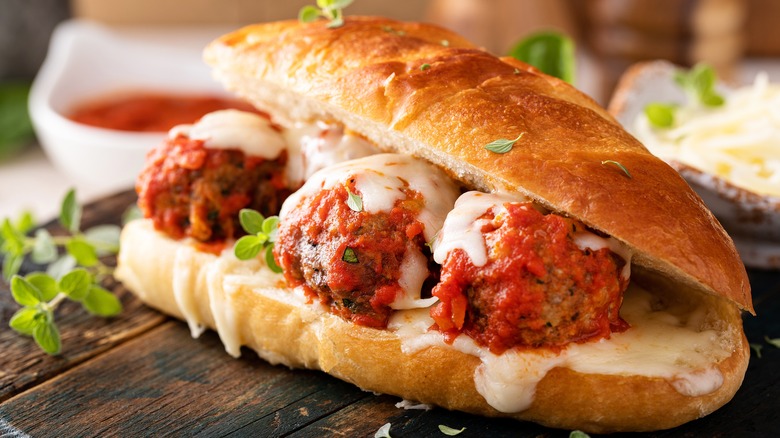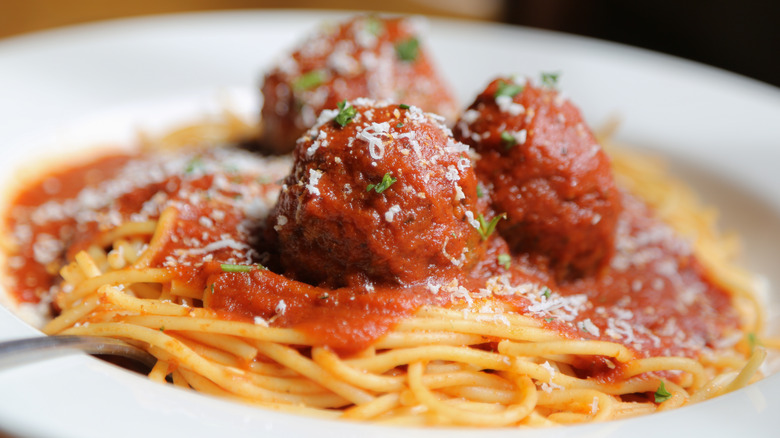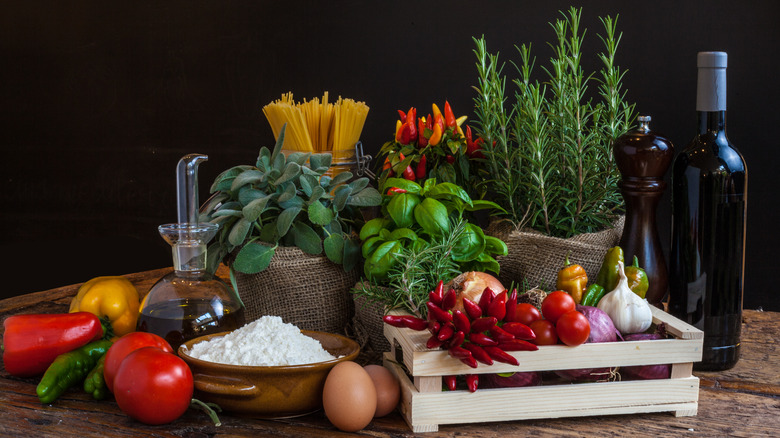Skip The Meat And Make Meatballs With Ricotta Cheese
In the English language, when we say 'meatball' there is a well-defined, common interpretation of the word, but the Italian equivalent ('polpetta' — the singular version of 'polpette') is much more expansive. In fact, in most recipes for polpette, meat is nowhere to be found on the ingredient list. Whether you follow a vegetarian diet, practice Meatless Monday, or you simply want to explore Italian cuisine more deeply, it's time you try a classic: polpette di ricotta.
In this dish, fresh, creamy Italian cheese is the star of the show. The process for preparing polpette is similar to your usual Italian meatballs recipe, but you swap in ricotta where you'd normally add in ground beef, pork, or chicken. Once you have mixed together the cheese with breadcrumbs, eggs, and seasonings (such as parsley, salt, and black pepper), you form the mixture into balls. Be extra careful when doing this, as polpette di ricotta are much more fragile than meatballs. Ricotta has a high moisture content and can be made up of anywhere from 60 to 80% water, so if your cheese is especially wet, you may need to add more breadcrumbs to securely bind everything together before cooking.
How to serve your polpette di ricotta
Polpette di ricotta are very versatile, just like meatballs. They can add richness and creaminess to a wide range of comforting, warm dishes like soups and casseroles, but two of the best ways to enjoy them are the simplest: on their own or spooned over pasta. Either option works wonderfully for a filling, flavorful first course and both should be accompanied by some kind of sauce.
The cheesy morsels are traditionally cooked on the stovetop in a simmering basic tomato sauce recipe that is characterized by the flavors of garlic and basil or oregano. If you want something with more of a kick, you can slightly alter this recipe by adding red pepper flakes, transforming it into another popular sauce known as arrabbiata. (This translates as "angry," as evidenced by the heated experience of eating it.) Whichever sauce you choose, you'll want something to soak it up. You can opt for a bed of spaghetti beneath your polpette, or, if you're serving them as a stand-alone dish, have some slices of bread on hand to 'fare la scarpetta' — sop up anything coating your plate at the end of the meal.
Tips and tricks from the tradition of cucina povera
Polpette di ricotta are part of the long Italian culinary tradition known as 'cucina povera,' which is often translated into English as "peasant food." These dishes generally rely on humble, affordable ingredients, which are nonetheless rich in flavor and nutrients, and often draw on the creativity of home cooks to substitute expensive foods like meat or upcycle products that are past their prime. One way to make your polpette di ricotta all the more authentically Italian is to make your own breadcrumbs with stale bread or the leftover heels of loaves that you have saved over time.
Once you have tried making polpette with ricotta as the primary ingredient, experiment with other types of meatless meatballs. You can also make polpette di pesce with white fish like cod or sole. For a vegetarian alternative, roast and then finely dice vegetables like eggplant or zucchini as the foundation for your polpette. The world is your oyster — or, in this case, meatball.
Static Media owns and operates Food Republic and Tasting Table.



